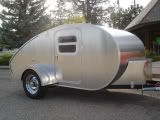I use mine quite a bit. I wouldn't say planers and belt sanders replace each other, but they compliment each other.
The planer will take a consistant line on each pass and it'll take down a lot of material in a short amount of time without having to check the line for parallel. It's great for doing end grain on plywood, as long as you go with the grain. The downside is it's not the best for shaping, (in my hand anyway), and if you want to plane an inside corner the front of the planer will hit well before you get to the end. Of course, I might be the only one that has to remove material after the joinery is glued up.

My belt sander is great for getting in where the planer won't and doing detail that takes a light touch. It'll pretty much do what the planer will do, but you have to change belts and it's easy to get off the line if you're not the best with pressure control.
I tend to use the belt sander to finsh up after the planer, if needed. I don't need to change belts much when I'm using both.
One trick to use when using most tools, (and it works for pool, too), is to keep your wrist locked and keep your forearm in-line with the stroke. Kind of like, when you're pulling, guide the tool with your elbow - keep your forearm on the line. If your elbow starts to arc away from the line, time to stop and reposition. If you train yourself to do this, you'll be able to cut down a corner when painting, without masking tape; cut a piece of wood with the skilsaw, without a clamped staight edge; and be able to use the sander/planer without beveling, unless you want a bevel

.





 Danny
Danny
 Guess I learned the hard way to be a little more carefull.
Guess I learned the hard way to be a little more carefull.


 .
.